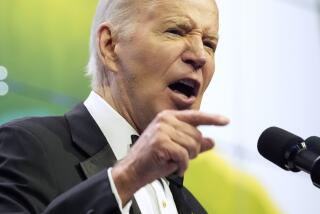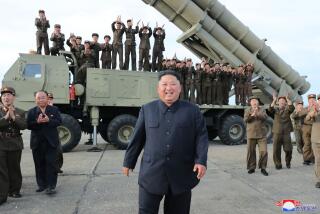POSTSCRIPT
Time was, time was true. In the olden days, noon was pegged to the exact moment the solstice sun reached its zenith high atop the village steeple, and the fact that noon in one village might thus occur three or four minutes before noon in a village a hundred miles to the west didn’t really matter because it would take the better part of a day at a full gallop to travel from one to the other and, anyway, who was counting? What difference did the difference make?
Of course, it began to make a great deal of difference in the middle of the 19th century, with the upsurge of transcontinental means of communications and transportation: New York City’s noon was Buffalo’s 11:40, and a train traveling between the two would have to keep track of its own time and the times at each terminus. Trains traveling between New York and Chicago could be weighted down with as many as 20 clocks, one for each stop--with the railroads having to print schedules for each way station. Consternation and befuddlement reared at every turn.
Naturally a longing for some sort of standardization began to make itself felt and, indeed, in 1884, an international conference was convened in Washington, D.C., to establish a sequence of 24 uniform “time zones,” anchored upon the longitude coursing through the observatory at Greenwich, outside London, with an “international dateline” conveniently stitched along the diametrically opposite side of the globe. (France alone held out, for 27 more years, insisting that the longitude running through Paris, rather than that running through London, constituted the system’s ground zero.)
Is it any wonder, though, that a child prodigy, born in 1879 and growing up in a world grappling with these sorts of issues--what precisely did it mean, for instance, in a world before time zones, to suggest that two events were happening “at the same time” in two locations?--that such a child might go on, in his young adulthood, to formulate a theory of relativity which deployed trains as one of the principal motifs in its exploration of the concept of simultaneity? (“Lightning has struck the rails on our railway embankment at two places A and B far distant from each other. . . .”) And that that theory, rooted in a classically 19th century conundrum, should in turn go on to become arguably the defining insight of the 20th, its promulgator (in the eyes of Time magazine and many others) “the Person of the Century”?
Time’s exemplary treatment of Albert Einstein and his legacy deserves, however, to be read side by side with Jonathan Schell’s remarkable essay, “The Unfinished Twentieth Century,” first published in the January issue of Harper’s. That essay--featured as the preface to a reissue of Schell’s classic 1982 study of nuclear arms, “The Fate of the Earth”--suggested that the century just past might be cast as a tale of three Augusts: August 1914, when liberal democracies failed to avert a downward spiral into cataclysmic total war, a war which led directly to the rise of two competing totalitarian systems (Stalinism and Nazism) and a second world war which in turn would culminate with the detonation, in August 1945, of a total weapon (indirect spawn, of course, of that same Einsteinian insight); the vertiginous proliferation of that weapon on either side of the ensuing divide between the so-called “Free” and “Communist” camps in turn defined the world’s power relations (not to speak of its entire existential fate) for much of the rest of the century until August 1991, when, with the failed communist putsch in Moscow, one side of the dyad, the Soviet Union, simply self-destructed, obliterating, along with itself, any remaining rationale for the ongoing existence of such horrifying arsenals.
It has become fashionable among historians and political commentators to speak of the “Short 20th Century,” which is to say the epoch beginning with 1914 and ending with--take your pick--1989 or 1991, the years when the nightmare totalitarian progeny of World War I (both polities and ideologies) finally collapsed of their own dead weight. But surely Schell is correct in noting that a major thematic strand of that history remains to play itself out, perhaps, as it were, in a “fourth August,” as he puts it, one in which humanity, through its political institutions (and in particular the remaining liberal democracies, through theirs), will either summon the fortitude to abolish such fearsome weapons once and for all or else, in an eerie repeat of 1914, find itself sleepwalking once again toward another yet more senseless and totalizing disaster.
*
Schell’s absolutist arguments in “Fate of the Earth”--amplified two years later across “Fate’s” clarion-call sequel “The Abolition” (1984, and also included in this new single-volume reissue)--were generally dismissed as belonging to the pacifist fringe at the time of their original publication, at the peak of the Reagan era’s headlong military build-up, but in the meantime, in the wake of the collapse of the Soviet Union, they have been largely endorsed by such disparate former establishmentarian nuclear hawks as Robert S. McNamara and Paul Nitze, who can no longer rationalize the ongoing existence of thousands of nuclear warheads and their spread to countless new potential nuclear mini-powers. The virtually complete occlusion of the issue from the recent debates leading into the pivotal election cycle of 2000 was one of the more dispiriting aspects of the millennial turnover--reminiscent, for that matter, in many ways of the political aphasia that preceded the debacles of 1914--and Einstein, for one, were he alive at the end of the century which so rightly bears his name, would not have remained silent in his urgent denunciation of such smug, complacent reticence. He, anyway, would have understood what time it is.
More to Read
Start your day right
Sign up for Essential California for news, features and recommendations from the L.A. Times and beyond in your inbox six days a week.
You may occasionally receive promotional content from the Los Angeles Times.






